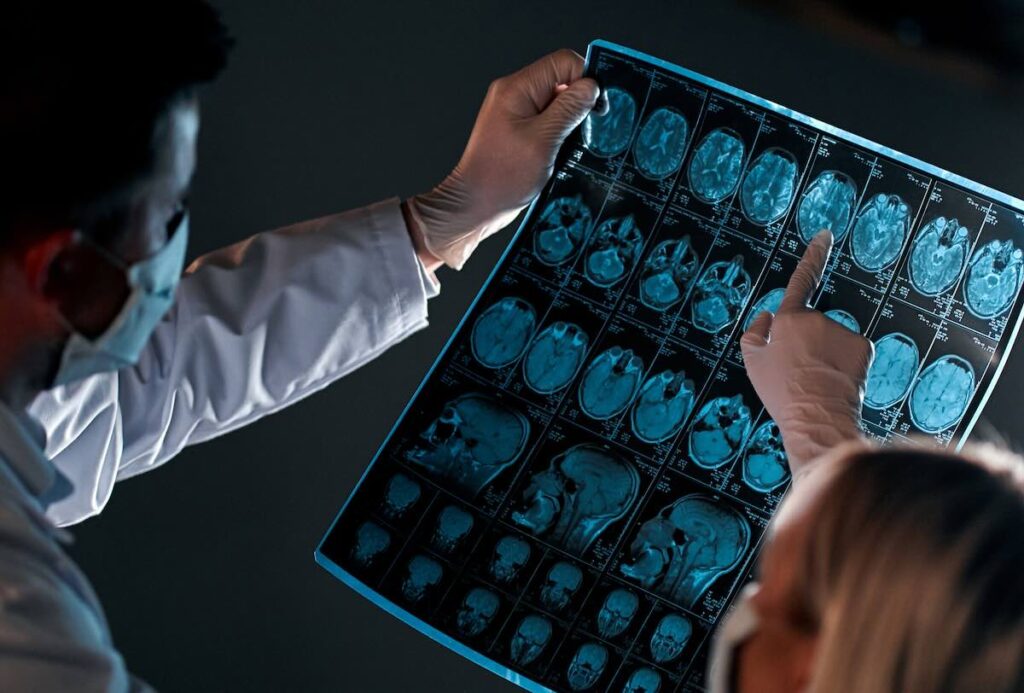Traumatic brain injuries (TBIs), resulting from auto and motorcycle accidents, are a significant public health concern in the United States. These injuries are a leading cause of brain injury-related hospitalizations and fatalities, with thousands affected annually. The Centers for Disease Control and Prevention (CDC) highlights motor vehicle crashes as a top cause of TBIs, especially among the young and elderly.
A TBI is caused by a severe blow or jolt to the head, impairing brain function. This can lead to symptoms and health issues that vary in severity. TBIs are classified as mild (often called concussions), moderate, or severe, each presenting unique challenges and recovery trajectories. Even mild TBIs can profoundly affect cognitive abilities, emotional health, and life quality.
The repercussions of a TBI go beyond physical injury, impacting employment, relationships, and daily cognitive and communication skills. Awareness of TBIs, their symptoms, and immediate actions post-accident is vital for optimal recovery and support for affected individuals.
Understanding Traumatic Brain Injuries in Auto Accidents
What Constitutes a TBI?
A traumatic brain injury (TBI) is defined by the disruption of normal brain function due to a violent blow or jolt to the head. This disruption can result from various mechanisms, including direct impact, rapid deceleration, or the violent whipping of the head back and forth during a crash.
Even without a direct blow to the head, the forces generated by a car accident can cause significant trauma to the brain, leading to injuries such as concussions, contusions, and diffuse axonal injuries.
Common Causes of TBI in Auto Accidents
In the context of auto accidents, TBIs often occur when the head strikes a solid object within the vehicle, such as the steering wheel, dashboard, or window. Additionally, the sudden deceleration or acceleration forces during a crash can cause the brain to crash against the interior of the skull, leading to bruising, tearing of tissues, and bleeding.
These injuries can also result from the rapid rotation or twisting of the head, which can stretch and damage brain nerves.
Types and Severity
Traumatic brain injuries can be categorized into several types based on their severity and the nature of the injury. Here are some of the most common types:
- Open Head Injuries: These occur when the skull is fractured, and the brain is directly injured by objects such as glass, metal, or bone fragments. Open head injuries are critical emergencies due to the risk of bleeding, swelling, and infection.
- Closed Head Injuries: These are more insidious and can occur without any visible signs of trauma. Closed head injuries include concussions, contusions, and diffuse axonal injuries. Concussions result from impact or changes in momentum, contusions involve bruising of the brain, and diffuse axonal injuries are caused by the stretching and tearing of brain nerves.
- Mild, Moderate, and Severe TBIs: The severity of a TBI can range from mild to severe. Mild TBIs, or concussions, may present with symptoms such as nausea, headache, drowsiness, and changes in speech or mood. Moderate and severe TBIs can result in more serious symptoms, including loss of consciousness, amnesia, and significant cognitive and physical impairments. Severe TBIs often require immediate medical intervention and can lead to long-term health issues or even death.
Understanding these types and severities is essential for diagnosing and treating TBIs effectively and anticipating their potential long-term impacts on the individual’s health and quality of life.
Immediate Steps to Take Following an Accident
Medical Assessment
After a car accident, the first and most critical step is to ensure everyone involved is safe and to assess any injuries.
If you or any of your passengers are injured, it is essential to call 911 immediately. Even if the injuries seem minor, it is important to seek medical attention, as some symptoms of traumatic brain injuries or other serious conditions may not be immediately apparent.
If you are able to move, check yourself and your passengers for any signs of injury.
If someone is seriously injured, do not attempt to move them unless they are in immediate danger, as this could exacerbate the injury. Wait for emergency personnel to arrive and provide professional medical care.
Documenting the Incident
While ensuring safety, it is also important to document the accident thoroughly.
This includes taking photos and videos of the accident scene, which can serve as valuable evidence for insurance claims and potential legal actions. Capture images of the damage to all vehicles involved, the position of the vehicles in relation to each other and the surrounding environment, and any other relevant details such as skid marks or debris.
In addition to visual documentation, gather information from all parties involved, including names, addresses, phone numbers, insurance details, and license plate numbers. Collecting contact information from witnesses who may have seen the accident is also helpful.
This information will be essential when filing a police report and an insurance claim.
Post-Accident Monitoring
After the immediate aftermath of the accident, it is vital to continue monitoring your and passengers’ health. Some injuries, particularly those related to traumatic brain injuries, may not manifest symptoms immediately.
Keep a record of any new or worsening symptoms and seek medical attention promptly if you notice any changes. This documentation will be essential for your medical records and can support your insurance claims or legal case if necessary.
Additionally, be aware of the potential for psychological trauma following a car accident. Even minor accidents can lead to feelings of anxiety, stress, or post-traumatic stress disorder (PTSD).
Seeking support from mental health professionals or support groups can help manage these emotional challenges and promote overall healing.
Long-Term Impact and Recovery
Rehabilitation and Therapy
The recovery process for individuals with traumatic brain injuries (TBIs) often involves a comprehensive and multidisciplinary approach to rehabilitation. This process typically begins during the acute treatment phase and continues into the post-acute phase, where the focus shifts to maximizing the patient’s capabilities and independence.
Rehabilitation programs for TBI can include physical therapy to address motor deficits such as paralysis, weakness, and poor balance. Occupational therapy helps individuals regain skills necessary for daily living, such as dressing, bathing, and managing finances.
Speech therapy is essential for those experiencing cognitive and communication difficulties, including problems with memory, problem-solving, and judgment.
Cognitive rehabilitation is also a key component, aimed at improving cognitive functions like attention, memory, and executive skills. This can involve various activities and programs designed to stimulate cognitive recovery, such as cognitive training exercises, memory aids, and strategies to enhance problem-solving abilities.
Challenges in Daily Life and Adaptations
Individuals with TBIs often face significant challenges in their daily lives.
These challenges can include cognitive deficits such as difficulty understanding and thinking clearly, trouble communicating, and problems with concentration and memory. Motor skills can also be affected, leading to issues with coordination, balance, and overall physical endurance.
In addition to physical and cognitive challenges, TBIs can impact emotional and social functioning.
Individuals may experience mood swings, anxiety, depression, and personality changes, which can strain interpersonal relationships and daily interactions. Adaptations may include developing new strategies for managing daily tasks, using assistive technologies, and seeking support from family and friends to help navigate these challenges.
Simple activities like shopping, cooking, or driving a car can become daunting tasks.
Therefore, it is essential to break down these tasks into manageable steps and seek assistance when needed. Lifestyle adjustments, such as maintaining a regular sleep schedule, healthy nutrition, and stress management, are also important for mitigating the long-term effects of TBI.
Support Systems and Resources
The journey to recovery from a TBI is not solitary; it requires a robust support system.
This includes family members, caregivers, and professional healthcare providers. Connecting with support groups, both online and in-person, can provide a sense of community and help individuals and their families cope with the emotional and practical challenges of living with a TBI.
Resources such as the Brain Injury Association of America and the Centers for Disease Control and Prevention (CDC) offer valuable information, guidance, and support for individuals affected by TBIs.
Additionally, many healthcare institutions provide specialized rehabilitation programs and ongoing care services to help individuals achieve the highest level of function and independence possible.
Financial support is also a critical aspect, as the costs associated with TBI care can be substantial. Programs like the Traumatic Head and Spinal Cord Injury Rehabilitation Fund can help cover the costs of physical, occupational, and speech therapy, as well as specialized equipment, ensuring that individuals receive the care they need without financial burdens.
Conclusion
In the aftermath of an auto accident, understanding and addressing traumatic brain injuries (TBIs) is vital for the well-being and recovery of those affected. It is essential to seek immediate medical attention, even if symptoms seem minor, as TBIs can have long-term cognitive, emotional, and physical impacts.
Rehabilitation and therapy are key components of the recovery process, helping individuals regain skills and adapt to new challenges. By documenting the incident thoroughly and leveraging support systems, individuals can better navigate the complexities of TBI recovery.
Remember, early intervention and comprehensive care are vital for maximizing recovery and improving quality of life. Take proactive steps to ensure your health and the health of your loved ones by prioritizing TBI awareness and seeking professional help when needed.




